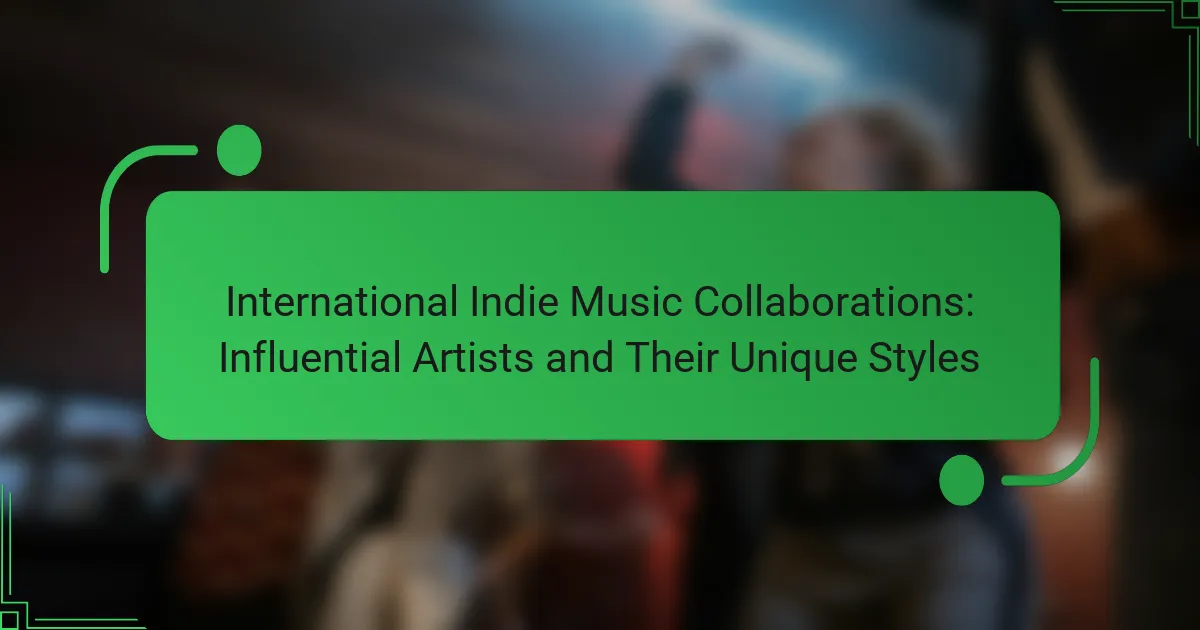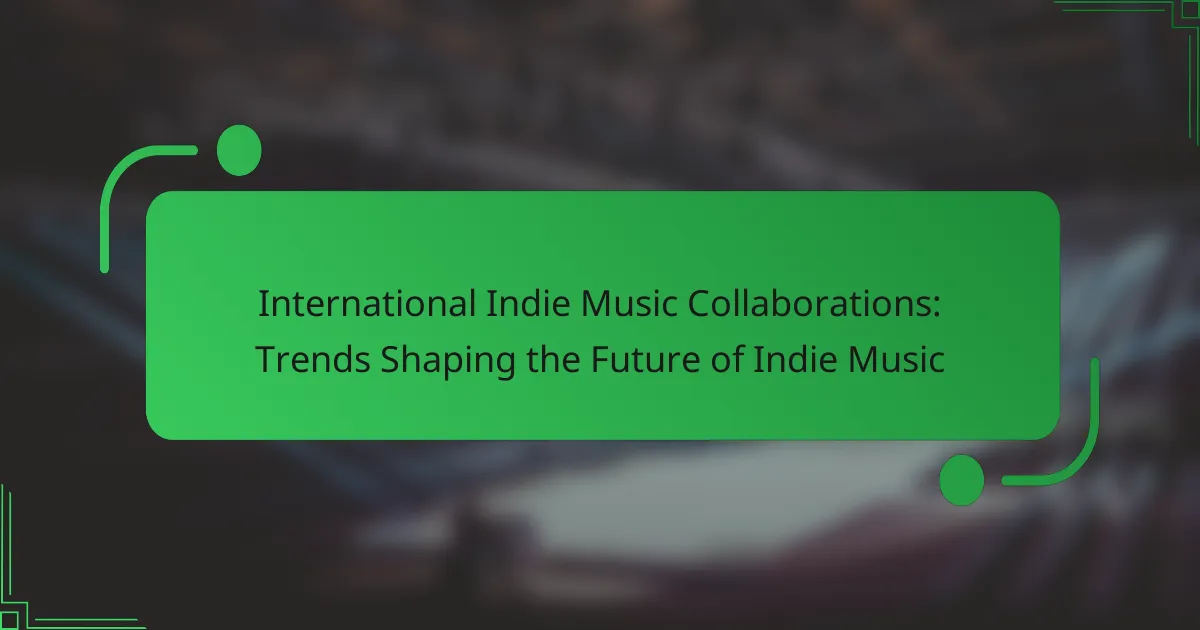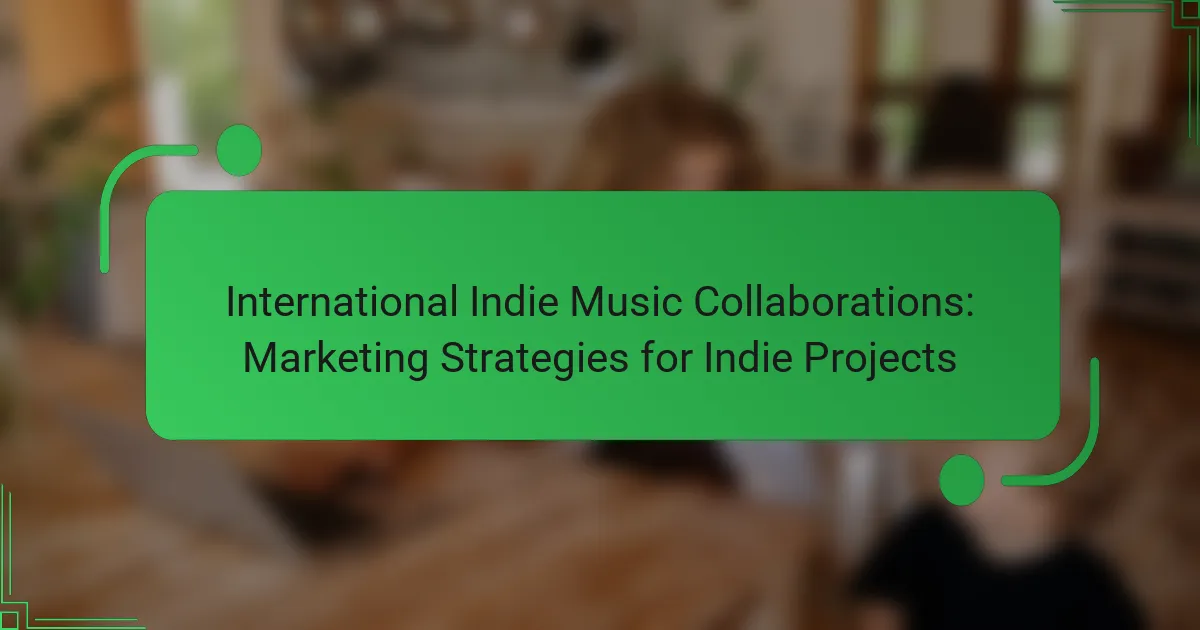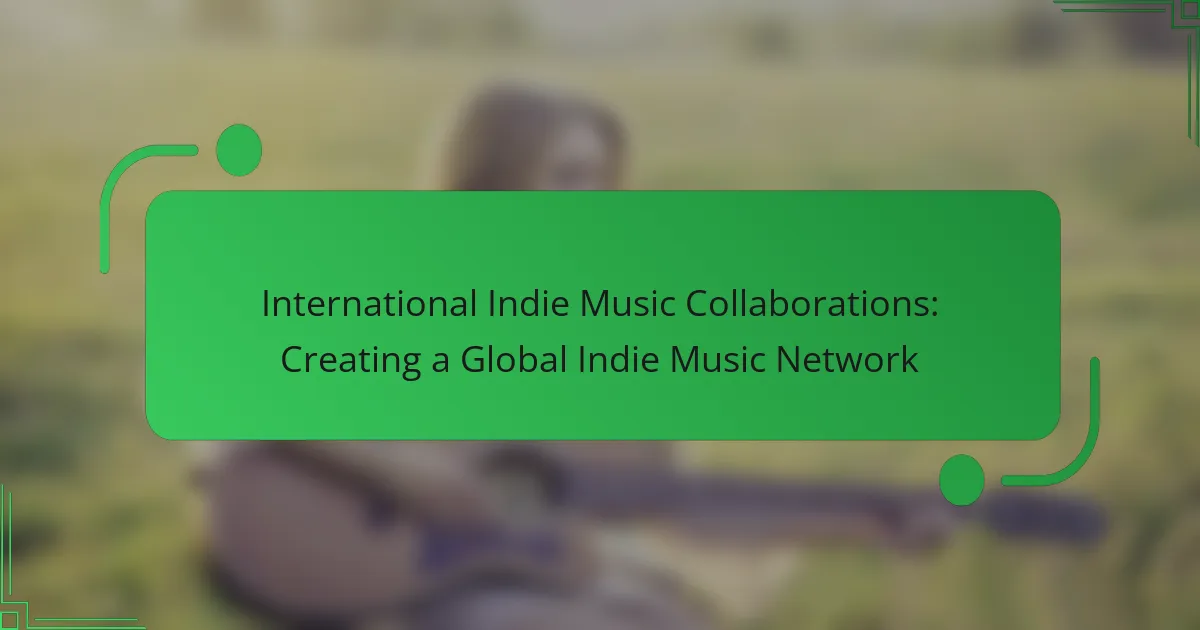International indie music collaborations enhance audience engagement and foster community building through cultural diversity and shared artistic visions. These partnerships face challenges like communication barriers and logistical issues. Understanding audience demographics is crucial for effective collaboration strategies. Key metrics such as streaming statistics and social media interactions help measure success and refine future projects.

How do international indie music collaborations enhance audience engagement?
International indie music collaborations significantly enhance audience engagement through diverse cultural influences and shared fan bases. These collaborations create unique soundscapes that attract listeners from different backgrounds. As a result, artists expand their reach and foster community building among fans. Collaborative projects often lead to increased social media interaction and streaming numbers, reinforcing the connection between artists and audiences. This synergy not only enriches the music experience but also cultivates a global community united by shared musical interests.
What are the key strategies for building a global audience through music collaboration?
Collaborating internationally in indie music enhances audience engagement and community building. Key strategies include leveraging social media platforms for cross-promotion, participating in global music festivals to reach diverse audiences, and forming partnerships with local artists to create culturally relevant content. Engaging with fans through interactive online events fosters a sense of community. Utilizing analytics tools to track audience preferences helps tailor collaborations to specific demographics. Finally, maintaining consistent communication with followers builds loyalty and encourages sharing among their networks.
Which platforms facilitate international indie music partnerships?
Platforms that facilitate international indie music partnerships include Bandcamp, SoundCloud, and ReverbNation. These platforms enable artists to connect globally, share music, and collaborate on projects. Bandcamp allows direct sales and fan engagement, while SoundCloud focuses on music sharing and community interaction. ReverbNation offers promotional tools and opportunities for exposure, enhancing audience engagement.
How does cultural diversity influence collaborative music projects?
Cultural diversity enriches collaborative music projects by blending various musical styles and perspectives. This fusion enhances creativity and broadens audience appeal. Diverse backgrounds foster unique collaborations, leading to innovative sounds that resonate across cultures. Engaging with varied traditions strengthens community bonds and promotes inclusivity within the music scene.
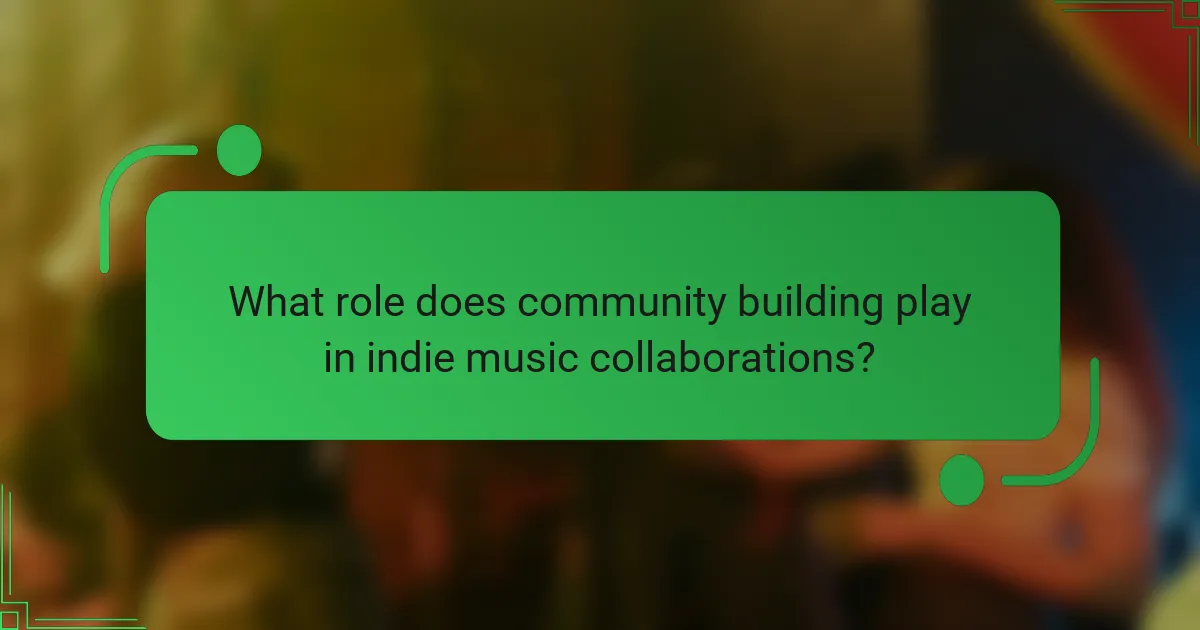
What role does community building play in indie music collaborations?
Community building is essential in indie music collaborations as it fosters audience engagement and loyalty. By creating a strong community, artists can share resources, ideas, and support each other’s work. Collaborative projects often lead to shared fan bases, enhancing visibility and reach. This interaction cultivates a sense of belonging, encouraging fans to actively participate in events and promote the music. Ultimately, community-driven collaborations can lead to innovative sounds and increased opportunities for all artists involved.
How do local communities support international indie artists?
Local communities support international indie artists through grassroots initiatives and collaborative events. These efforts create platforms for exposure and engagement, fostering a sense of belonging. Community-driven concerts and festivals often feature indie artists, promoting cultural exchange. Local businesses may sponsor events, enhancing visibility and resources for artists. Additionally, social media campaigns amplify artist reach, connecting them with diverse audiences. This mutual support strengthens community bonds and enriches the local cultural landscape.
What are the benefits of grassroots movements in music collaboration?
Grassroots movements in music collaboration foster community engagement and enhance audience connection. They empower local artists, promote diverse voices, and create inclusive spaces for creativity. These movements often lead to increased participation and support from audiences, driving a sense of belonging. Additionally, they can generate unique musical experiences that reflect local culture and identity, enriching the overall music landscape.
How can artists leverage social media for community engagement?
Artists can effectively leverage social media to engage their community by creating authentic connections and sharing collaborative content. Regular interaction with followers fosters loyalty, while live sessions can build a sense of community. Utilizing targeted hashtags increases visibility and connects artists with like-minded individuals. Collaborating with other indie musicians amplifies reach and diversifies content, encouraging audience participation. Engaging storytelling about the creative process enhances relatability and deepens audience ties.
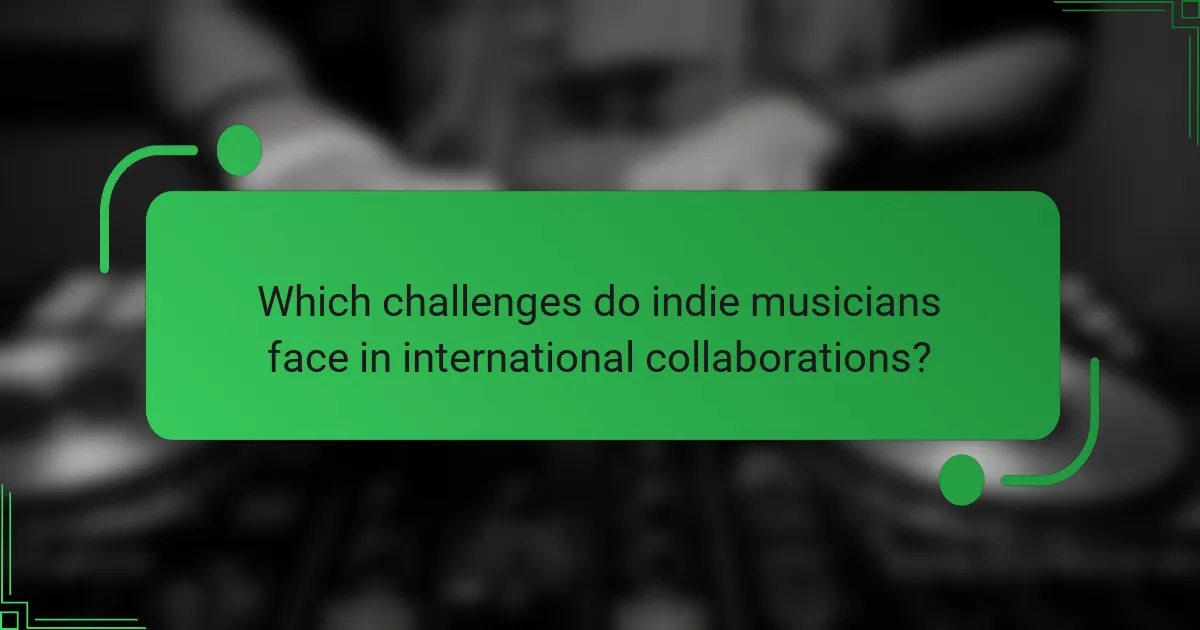
Which challenges do indie musicians face in international collaborations?
Indie musicians face several challenges in international collaborations, including cultural differences, communication barriers, and varying industry standards. These factors can hinder effective audience engagement and community building. Additionally, logistical issues such as time zone differences and financial constraints may complicate collaboration efforts. Establishing a shared vision and understanding is crucial for successful partnerships in the global music landscape.
What are common legal and logistical issues in cross-border music projects?
Common legal and logistical issues in cross-border music projects include copyright, licensing, and taxation. Artists must navigate diverse legal systems, which can complicate agreements and revenue sharing. Additionally, logistical challenges like communication barriers and cultural differences can hinder collaboration. Understanding local regulations is crucial for successful international indie music collaborations.
How do language barriers affect collaboration efforts?
Language barriers significantly hinder collaboration efforts in international indie music projects. They can lead to misunderstandings, limit creative expression, and reduce audience engagement. Effective communication is essential for building community and fostering collaboration among diverse artists. As a result, artists may need to utilize translation tools or seek bilingual collaborators to bridge these gaps and enhance their collective output.
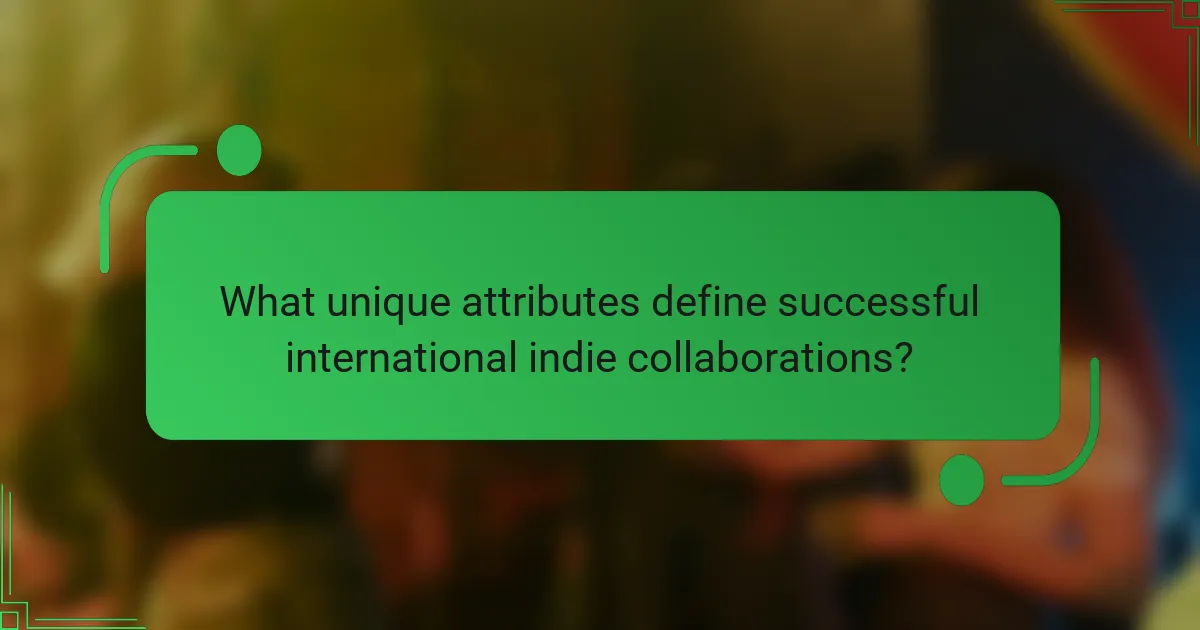
What unique attributes define successful international indie collaborations?
Successful international indie collaborations are defined by cultural diversity, shared artistic vision, and effective communication. These unique attributes foster innovative music creation and resonate with diverse audiences. Cultural diversity enriches the collaboration, allowing artists to blend various musical styles and traditions. A shared artistic vision ensures that all collaborators are aligned creatively, leading to cohesive projects. Effective communication is vital for overcoming language barriers and facilitating collaboration, enhancing audience engagement and community building.
How do genre fusions create innovative music experiences?
Genre fusions create innovative music experiences by blending distinct styles, enhancing creativity and audience engagement. Collaborations in international indie music foster community building and cultural exchange. These partnerships often result in unique soundscapes that challenge traditional genre boundaries, attracting diverse audiences. For example, a fusion of folk and electronic elements can introduce new rhythms and melodies, appealing to fans of both genres. This innovation not only enriches the listening experience but also promotes collaboration among artists, strengthening community ties.
What are the trends in collaborative music formats and styles?
Collaborative music formats are increasingly focused on community engagement and audience interaction. Artists are utilizing digital platforms for real-time collaboration, enhancing listener participation. Unique attributes include genre fusion and cross-cultural partnerships, which create diverse soundscapes. Rarely, collaborations involve interactive elements like live-streaming sessions, allowing fans to influence the creative process. These trends foster a sense of belonging and shared experience among listeners.
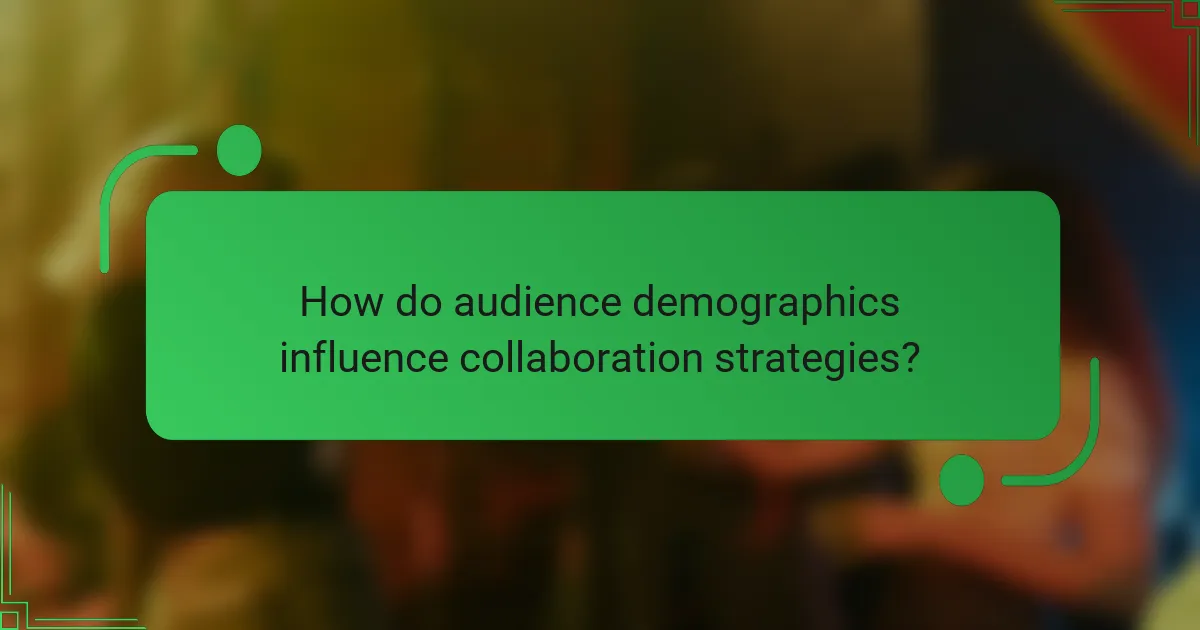
How do audience demographics influence collaboration strategies?
Audience demographics significantly shape collaboration strategies in international indie music. Understanding age, location, and cultural preferences enables artists to tailor their approaches effectively.
Younger audiences often favour digital platforms, prompting collaborations that leverage social media for promotion. In contrast, older demographics may appreciate traditional marketing methods, influencing partnership choices.
Cultural background also plays a crucial role. Collaborations that respect and integrate diverse cultural elements can enhance audience engagement. For example, blending musical styles from different regions can attract wider listener bases.
Ultimately, analyzing audience demographics allows indie musicians to create meaningful collaborations that resonate with their communities, fostering deeper connections and engagement.
What are the listening habits of international audiences?
International audiences exhibit diverse listening habits influenced by cultural backgrounds and preferences. They often engage with music through streaming platforms, social media, and live events. Collaboration among international indie artists fosters community building, enhancing audience connection. Additionally, niche genres gain traction as listeners seek unique sounds that reflect their identities.
Which marketing techniques resonate with diverse listener bases?
International indie music collaborations engage diverse listener bases through personalized storytelling, cultural exchange, and social media interaction. These techniques foster community building and enhance audience connection.
Personalized storytelling resonates by showcasing artists’ backgrounds and motivations, making their music relatable. Cultural exchange enriches the listening experience by blending different musical styles, appealing to broader demographics. Social media interaction allows real-time engagement, facilitating discussions and feedback, which strengthens community ties.
Collaborations also leverage local influencers to amplify reach, ensuring diverse voices are represented. By hosting virtual events, artists can engage listeners globally, creating a sense of belonging. These strategies collectively enhance audience engagement and community building in the indie music scene.
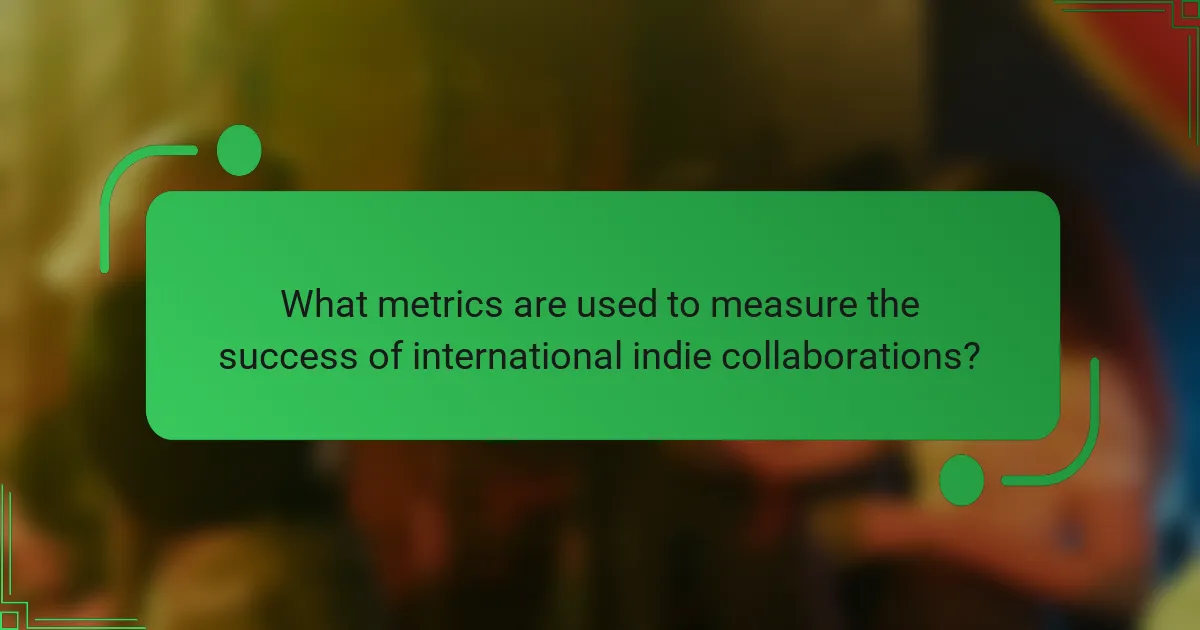
What metrics are used to measure the success of international indie collaborations?
Key metrics to measure the success of international indie collaborations include audience reach, engagement rates, streaming statistics, social media interactions, and community feedback. These metrics provide insights into how well the collaboration resonates with listeners and fosters community building. Tracking these indicators helps artists understand their impact and refine future projects.
How do streaming numbers reflect audience engagement?
Streaming numbers serve as a key indicator of audience engagement in international indie music collaborations. High streaming counts suggest strong listener interest and community involvement. For example, collaborations that achieve significant streaming milestones often reflect effective marketing strategies and resonate with diverse audiences. Additionally, analytics reveal patterns in listener demographics, helping artists tailor future projects to enhance engagement. These insights foster a sense of community among fans, driving further collaboration and interaction within the indie music scene.
What role do live performances play in assessing collaboration impact?
Live performances are crucial for assessing the impact of international indie music collaborations on audience engagement and community building. They provide direct interaction between artists and audiences, enhancing emotional connections and fostering a sense of belonging.
These events allow for real-time feedback, enabling artists to gauge audience reactions and adapt their performances accordingly. Live shows often serve as a platform for showcasing collaborative works, amplifying visibility for both artists and their communities.
Moreover, the atmosphere of a live performance can create memorable experiences that strengthen community ties. Audiences often share these experiences, promoting word-of-mouth engagement and expanding the reach of indie music collaborations.
In summary, live performances play a vital role in measuring the success of collaborative efforts by enhancing audience engagement and building lasting community connections.
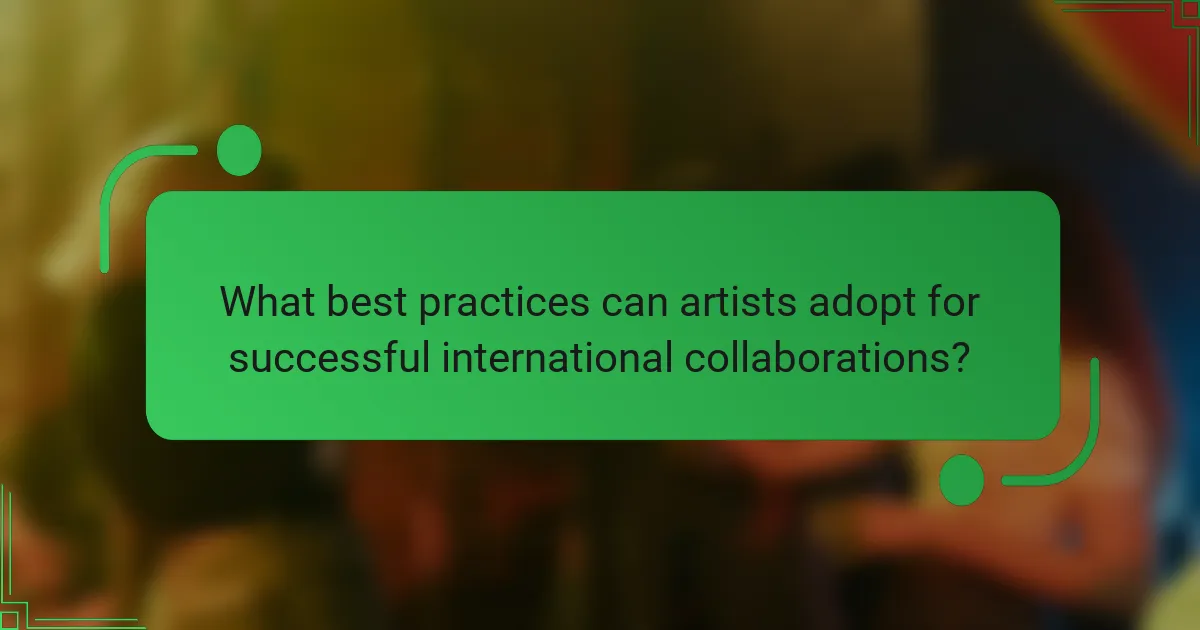
What best practices can artists adopt for successful international collaborations?
Artists can adopt several best practices for successful international collaborations. Establish clear communication channels to ensure all parties understand expectations. Utilize social media platforms to engage with diverse audiences and foster community interaction. Leverage local cultural insights to create authentic connections and resonate with international fans. Prioritize mutual respect and flexibility to accommodate different working styles and cultural nuances. Regularly assess collaboration goals to maintain alignment and adapt strategies as needed.
How can artists effectively communicate and coordinate across cultures?
Artists can effectively communicate and coordinate across cultures by embracing collaboration, utilizing technology, and respecting diverse perspectives. Collaborative platforms enable real-time interactions, fostering creativity. Artists should engage with local communities, understanding cultural nuances to build authentic connections. Utilizing social media facilitates sharing and audience engagement, allowing for broader reach and interaction. Respecting cultural differences enhances trust and collaboration, leading to successful international indie music projects.
What are the common pitfalls to avoid in collaborative projects?
Common pitfalls in international indie music collaborations include poor communication, lack of clear goals, cultural misunderstandings, and insufficient audience engagement strategies. These issues can lead to misaligned expectations and reduced effectiveness in community building. Prioritize open dialogue and establish shared objectives to enhance collaboration. Emphasize cultural sensitivity to foster a more inclusive environment. Regularly assess audience engagement to ensure the collaboration resonates with listeners.
How can artists maintain authenticity while collaborating internationally?
Artists can maintain authenticity while collaborating internationally by prioritising their unique voices and cultural influences. Embracing diverse perspectives enriches the collaborative process. Establishing clear communication fosters mutual respect and understanding. Engaging with local communities enhances authenticity and builds a supportive audience. Balancing personal expression with collaborative goals ensures that individual artistry remains intact.
